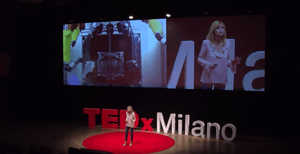We may not be far from the mass and everyday use of robots. Soon robots will be living in our houses, they will help us with our domestic chores, in helping the elderly, and will be useful for monitoring the environment and food. The true challenge is foreseeing the impact that these robots will have in the future in improving our quality of life.
These are the words of Barbara Mazzolai, biologist and engineer at the Italian Institute of Technology of Pontedera, recent author of the book “La natura geniale” (“Amazing nature”, Longanesi publishing house) and coordinator or the European research group that created plantoids, a new generation of plant-inspired robots. A planetoid does not have an anthropomorphic (humanoid) form, but like a plant, it has a trunk, branches, leaves and roots: the latter grow due to the addition of synthetic material printed in 3D from the inside and move and orientate themselves in their surroundings thanks to sophisticated sensors positioned in the tips of the roots.
The idea of building machines and objects that reproduce the constructions and mechanisms of natural functions is not as bizarre as it may appear at first sight. And it isn’t new either. The concept is explained in detail by the scientific philosopher Telmo Pievani in his article “Robotics imitate biology: make way for the plantoids” (La Lettura, 14 April 2019):
“This is called biomimetic robotics: instead of reinventing everything all over again, inspiration is taken directly from the solutions developed by living organisms over millions of years of evolution. We have been doing so for some time now, more or less consciously: the internal structure of the trabeculae of the femur inspired Gustav Eiffel to build his tower in Paris, the aerodynamic nose of ultra-fast Japanese trains is modelled on the beak of the kingfisher, the most advanced adhesive tapes simulate the adhesive abilities of gecko’s feet. By observing the flight of plant seeds, engineers have designed parachutes and monoplanes. And it is thanks to plants that we have Velcro and self-cleaning surfaces”.
But what exactly is a plantoid used for?
“For environmental monitoring and for looking for water or dangerous substances in the environment. In the future we will be able to use it as a new endoscope. This ability to grow within tissues, without causing damage to our bodies and our organs could be a new frontier: planetoids could release substances like medicines, or search for targets that are of interest to doctors”.
According to Mazzolai’s vision, robots are therefore not a potential threat, but an extraordinary help at the service of humanity, the result of a virtuous alliance between biology and technology.

